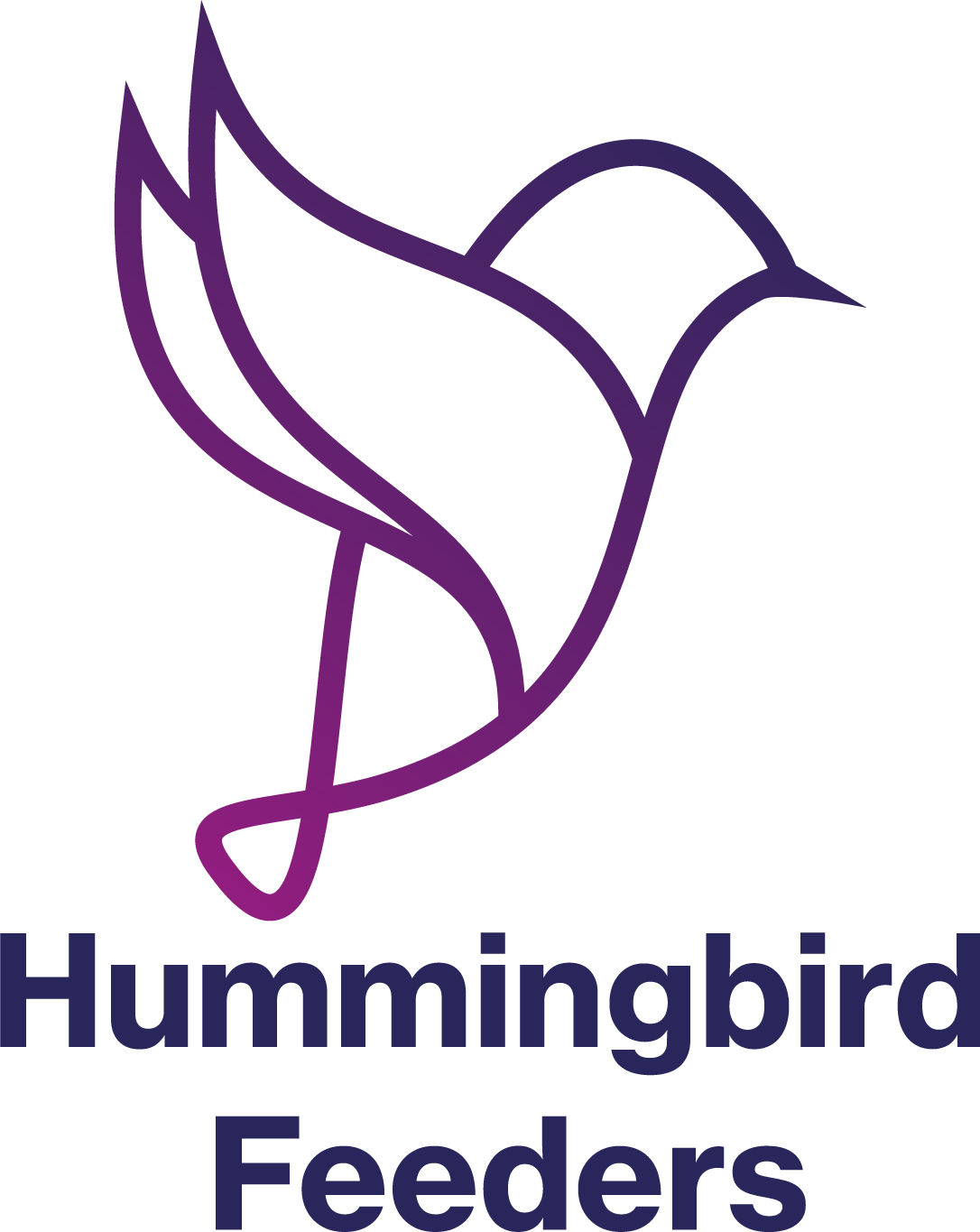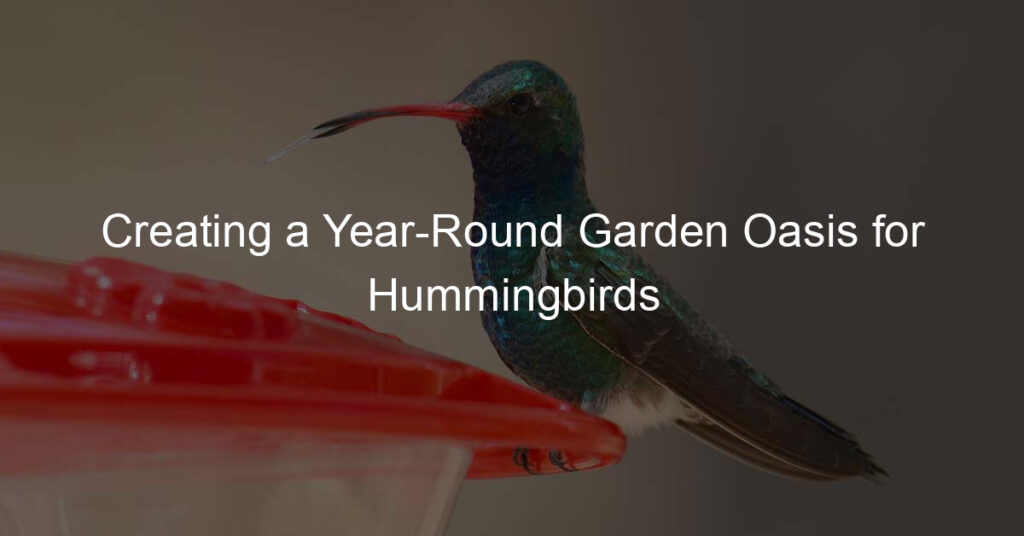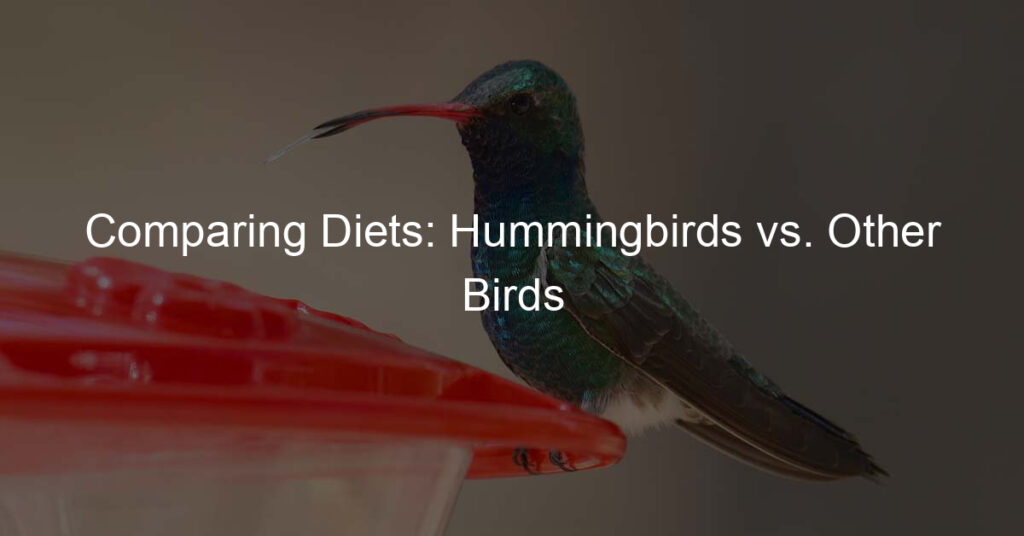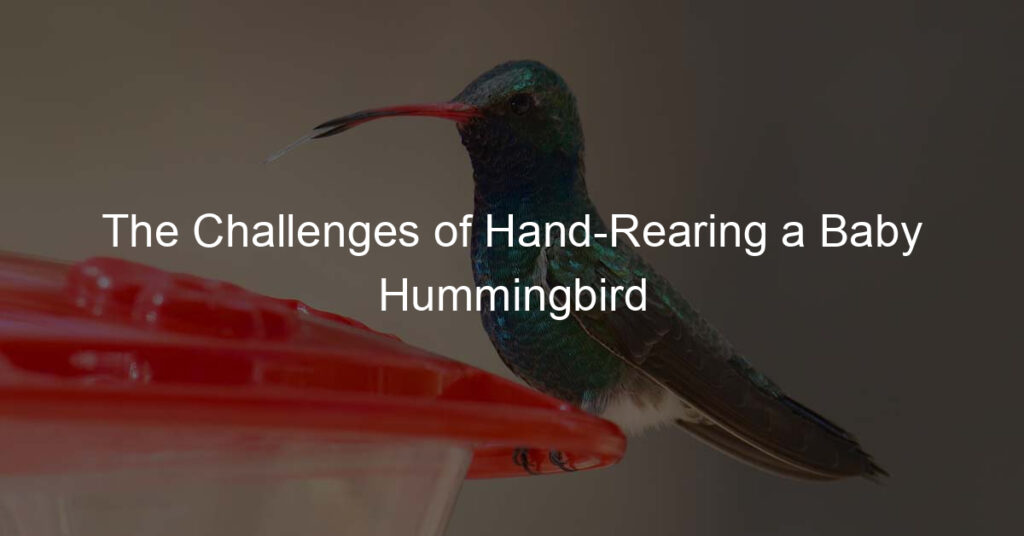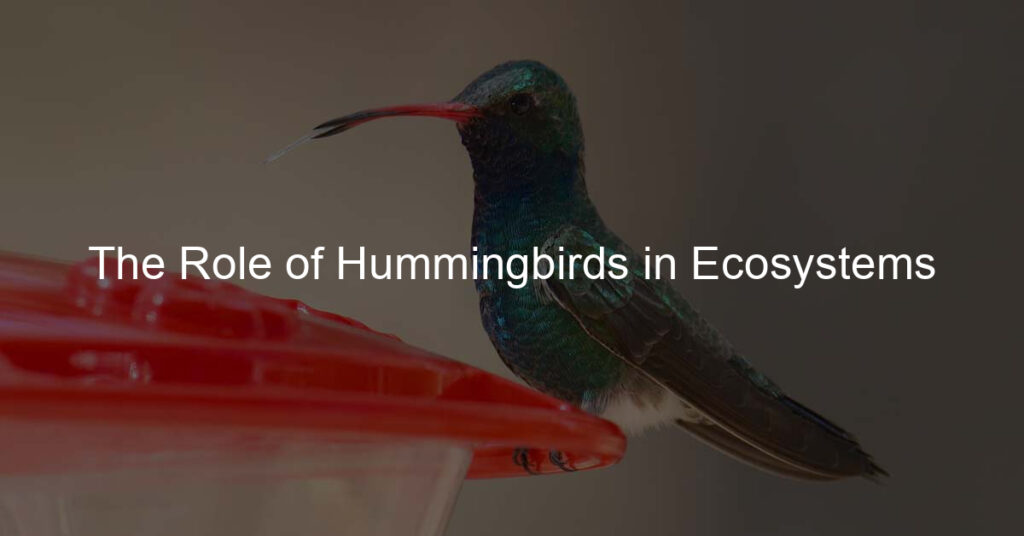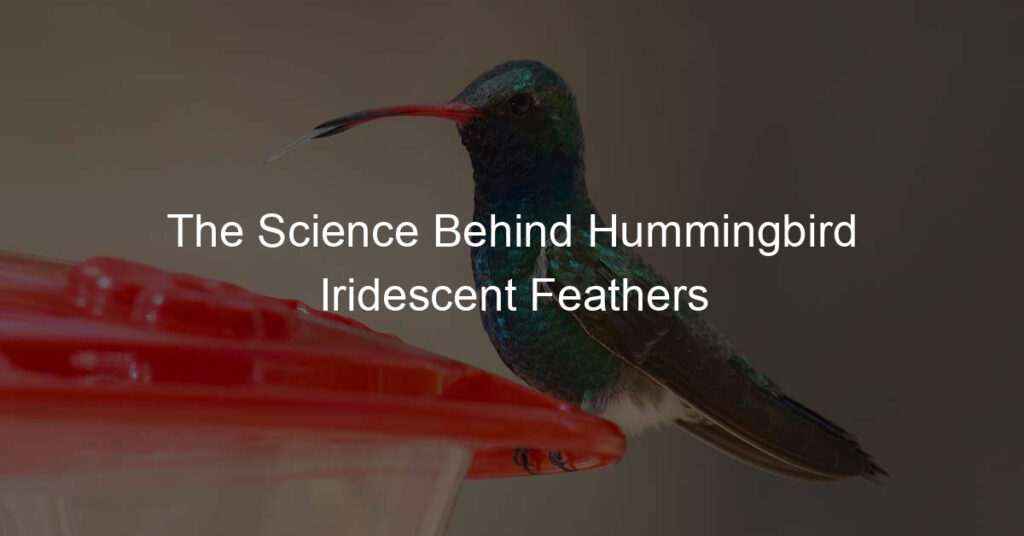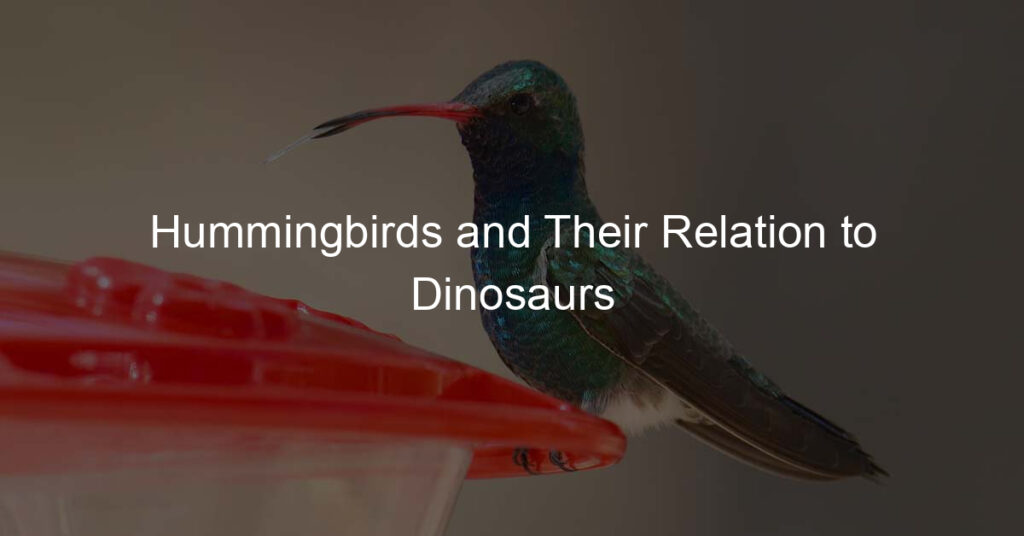Introduction to Hummingbird Garden Design
Welcome to the fascinating world of hummingbird gardens. These special gardens are designed to attract, feed, and provide a habitat for the remarkable hummingbirds. Let’s delve into what a hummingbird garden is and why you might want to create one.
What is a hummingbird garden?
A hummingbird garden is a carefully planned and planted garden that attracts hummingbirds. It includes specific plants that hummingbirds love, such as those with bright, tubular flowers full of nectar. These gardens also often include features like hummingbird feeders and water sources. The goal is to create a haven for these tiny, fast-flying birds, providing them with food, shelter, and a place to breed. Learn more about hummingbird gardens here.
Why create a hummingbird garden?
Creating a hummingbird garden has many benefits. For one, it’s a wonderful way to support local hummingbird populations, which can be threatened by habitat loss. It’s also a fantastic way to add beauty and interest to your yard. Hummingbirds are fascinating creatures to watch, and their presence can bring a sense of peace and joy. Plus, they’re excellent pollinators, so they can help your garden thrive. Finally, creating a hummingbird garden can be a fun and rewarding project for gardeners of all ages and skill levels.
Now that we’ve covered the basics, let’s dive deeper into how to design a hummingbird garden that will keep these beautiful birds coming back year after year.
Year-round Hummingbird Garden: A Comprehensive Guide
Creating a year-round hummingbird garden is a rewarding endeavor. It not only enhances the beauty of your outdoor space but also provides a habitat for these delightful creatures. Let’s delve into the key factors that attract hummingbirds.
Attracting Hummingbirds: Key Factors
There are two primary factors to consider when designing a hummingbird garden: understanding hummingbird habits and creating a hummingbird-friendly environment.
Understanding Hummingbird Habits
Hummingbirds are fascinating creatures with unique habits. They are attracted to bright colors, particularly red, and have a high metabolism that requires them to feed frequently. They prefer nectar from flowers but will also eat insects and spiders for protein. Understanding these habits can help you create a garden that caters to their needs.
Creating a Hummingbird-friendly Environment
Creating a hummingbird-friendly environment involves more than just planting flowers. It requires providing a habitat that meets their needs for food, water, and shelter. This includes having a variety of nectar-rich flowers that bloom at different times of the year, providing clean water sources, and ensuring safe nesting sites.
In conclusion, understanding hummingbird habits and creating a suitable environment are crucial in attracting these beautiful birds to your garden. By incorporating these key factors into your garden design, you can enjoy the company of hummingbirds all year round.
Hummingbird-friendly Plants: What to Grow
Creating a year-round hummingbird garden requires careful selection of plants that not only attract these beautiful birds but also provide them with a continuous source of food. Here are some of the best plants to grow in your hummingbird garden.
Flowers and plants hummingbirds love
Hummingbirds are attracted to bright, colorful flowers that produce plenty of nectar. Some of their favorites include:
Salvia: These plants, also known as sage, have tubular flowers that are perfect for hummingbirds. They come in a variety of colors, including red, pink, and purple.
Bee Balm: This plant’s bright red flowers are a hummingbird favorite. It’s also easy to grow and resistant to deer and rabbits.
Fuchsia: These plants have beautiful, hanging flowers that hummingbirds love. They do well in shade, making them a great choice for parts of your garden that don’t get a lot of sun.
Year-round plants for continuous attraction
To keep hummingbirds coming to your garden all year, you’ll need plants that bloom at different times. Here are some options:
Winter Jasmine: This plant blooms in late winter and early spring, providing nectar when few other plants are in bloom.
Trumpet Vine: This plant blooms in the summer and has bright, tubular flowers that hummingbirds can’t resist.
Autumn Sage: As its name suggests, this plant blooms in the fall, providing a late-season source of nectar.
By carefully selecting and planting a variety of these flowers, you can create a hummingbird garden that is not only beautiful but also provides a year-round source of food for these delightful birds.
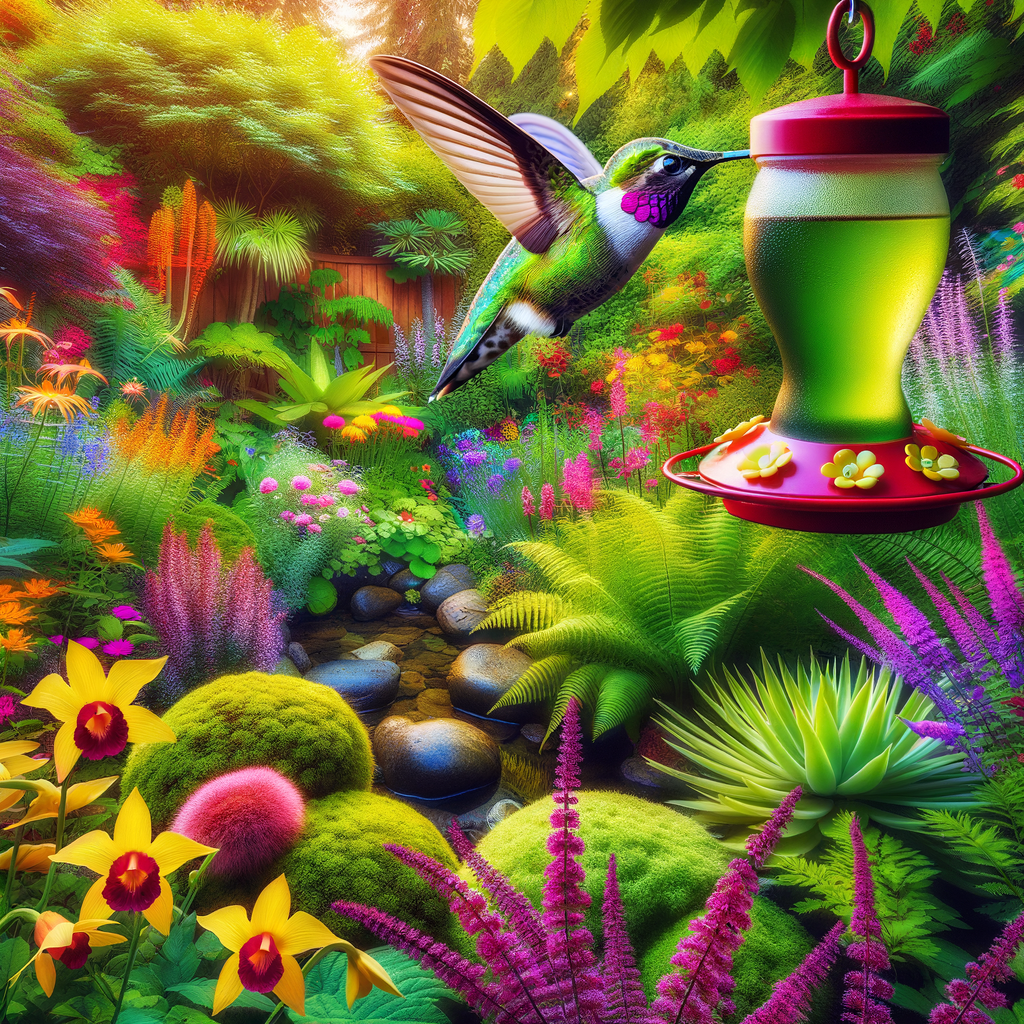
Creating Your Garden Oasis: Practical Steps
Creating a garden oasis is not just about planting flowers and waiting for hummingbirds to come. It involves careful planning and design. Here are some practical steps to help you create your own hummingbird garden oasis.
Designing the Layout
Designing the layout of your garden is a crucial step in creating an oasis. It involves two main steps: choosing the right location and planning your garden layout.
Choosing the right location
The location of your garden plays a significant role in attracting hummingbirds. Choose a location that gets plenty of sunlight, as hummingbirds are attracted to bright colors. The location should also be quiet and safe from predators. You can learn more about choosing the right location for your garden from this Wikipedia article.
Planning your garden layout
Once you’ve chosen the right location, it’s time to plan your garden layout. Consider the types of plants hummingbirds prefer, such as those with bright, tubular flowers. Arrange these plants in a way that allows hummingbirds to easily move from one to another. Also, include a water source in your layout, as hummingbirds need to drink and bathe regularly.
Remember, creating a garden oasis requires patience and dedication. But with careful planning and design, you can create a beautiful oasis that not only attracts hummingbirds but also provides a peaceful retreat for you and your family.
Planting and Care
How to Plant Hummingbird-Friendly Plants
Creating a hummingbird-friendly garden starts with planting the right plants. Hummingbirds are attracted to bright, tubular flowers that are rich in nectar. Some popular choices include salvia, lobelia, and fuchsia.
Here are some simple steps to plant these hummingbird-friendly plants:
Choose a sunny spot in your garden. Most hummingbird-friendly plants need plenty of sunlight to grow and produce nectar.
Prepare the soil. It should be well-draining and rich in organic matter.
Plant the flowers. Dig a hole that’s twice as wide and just as deep as the plant’s root ball. Place the plant in the hole and fill it with soil.
Water the plants thoroughly after planting.
Maintaining Your Garden Year-Round
Maintaining a hummingbird garden requires year-round care. Here are some tips to keep your garden thriving:
Spring: This is the best time to plant new flowers. Also, clean your hummingbird feeders and fill them with fresh nectar.
Summer: Water your plants regularly, especially during dry spells. Keep the feeders clean and filled with nectar.
Fall: Some hummingbird-friendly plants can be pruned in the fall to encourage new growth in the spring. Remove any dead or diseased plants.
Winter: In colder regions, most hummingbirds migrate south for the winter. However, if you live in a warmer climate, continue to provide nectar in your feeders for any remaining hummingbirds.
Hummingbird Feeder Tips: Enhancing Your Garden
Attracting hummingbirds to your garden can be a rewarding experience. With their vibrant colors and rapid wing movements, these tiny birds can bring life and beauty to any garden. One of the most effective ways to attract hummingbirds is by using a hummingbird feeder. Here are some tips on choosing the right feeder and how to care for it.
Choosing the right feeder
When selecting a hummingbird feeder, consider the size, material, and design. A good feeder should be easy to clean and refill. It should also have a wide mouth to prevent nectar from spilling. Glass feeders are often recommended because they are durable and easy to clean. However, plastic feeders are lighter and less likely to break. The feeder’s color also matters. Hummingbirds are attracted to bright colors, especially red. So, a red feeder can attract more hummingbirds to your garden. Wikipedia has a comprehensive guide on hummingbird feeders that you might find helpful.
Feeder placement and care
Where you place your feeder can affect how many hummingbirds visit your garden. Feeders should be placed in a quiet and safe location, away from busy areas and potential predators. They should also be hung at a height that is easy for you to reach for cleaning and refilling. It’s best to place the feeder near nectar-producing flowers to attract more hummingbirds. Regular cleaning is crucial to prevent the growth of mold and bacteria that can harm the birds. It’s recommended to clean the feeder with hot water and a mild detergent at least once a week.
In conclusion, a well-chosen and well-maintained hummingbird feeder can significantly enhance your garden by attracting these beautiful birds. Remember, the key is to provide a safe and clean feeding environment for the hummingbirds. Happy bird watching!
Year-round Garden Maintenance: Keeping Your Oasis Thriving
Keeping your hummingbird garden thriving all year round requires careful planning and maintenance. This guide will walk you through the essential tasks for each season to ensure your garden remains a vibrant oasis for hummingbirds.
Seasonal Care
Each season brings its own set of challenges and opportunities for your garden. By understanding what your garden needs during each season, you can ensure it remains healthy and attractive to hummingbirds.
Spring and Summer Maintenance
Spring and summer are the prime growing seasons for most plants. During these months, your main tasks will be watering, weeding, and feeding your plants.
Watering should be done early in the morning or late in the evening to prevent evaporation. Weeding is essential to prevent unwanted plants from competing with your garden plants for nutrients. Feeding your plants with a slow-release fertilizer can help them grow stronger and produce more flowers for the hummingbirds.
It’s also a good time to add new plants to your garden. Choose plants that bloom in different months to ensure a steady supply of nectar for the hummingbirds.
Fall and Winter Care
Fall and winter are the dormant seasons for most plants. During these months, your main tasks will be preparing your garden for the cold weather and planning for the next growing season.
Start by removing any dead or diseased plants and leaves from your garden. This will help prevent the spread of diseases and pests. Next, add a layer of mulch to your garden beds to protect the soil from freezing temperatures.
Winter is also a good time to plan for the next growing season. Research new plants to add to your garden and order seeds or bulbs in advance. This way, you’ll be ready to start planting as soon as the weather warms up.
By following these seasonal care tips, you can keep your hummingbird garden thriving all year round. Remember, a well-maintained garden is not only beautiful to look at, but it also provides a vital habitat for hummingbirds and other wildlife.
Dealing with Pests and Problems
Keeping your hummingbird garden thriving year-round requires vigilance against common pests and problems. Let’s delve into some of these challenges and explore effective solutions.
Common garden pests
Several pests can pose a threat to your hummingbird garden. These include:
Aphids: These tiny insects suck the sap from plants, causing them to wilt and die. They also produce a sticky substance called honeydew, which can lead to mold growth.
Slugs and Snails: These pests feed on a variety of garden plants, leaving large, irregular holes in leaves and stems.
Caterpillars: While some caterpillars are harmless, others can cause significant damage to plants by eating their leaves.
For more information on common garden pests, visit Wikipedia’s page on pest-repelling plants.
Solutions for common garden problems
Here are some solutions to common garden problems:
Use natural predators: Encourage the presence of birds, frogs, and other natural predators in your garden to help control pest populations.
Plant pest-resistant varieties: Some plants are naturally resistant to certain pests. Research and choose these varieties when planning your garden.
Regular maintenance: Regularly inspect your garden for signs of pests and disease. Early detection can make treatment much easier.
For more detailed solutions, you can visit Wikipedia’s page on Integrated Pest Management.
Remember, a well-maintained garden is less likely to face severe pest problems. Regular inspection and prompt action can help keep your hummingbird oasis thriving all year round.
Creating Bird-friendly Gardens: Beyond Hummingbirds
While hummingbirds are a joy to watch, your garden can be a haven for a variety of other bird species too. By creating a bird-friendly garden, you can attract a diverse range of birds and create a multi-species oasis. Let’s explore how.
Attracting other bird species
Attracting a variety of bird species to your garden requires a bit of planning and effort. Here are some tips:
Provide Food: Different birds have different diets. Some birds eat insects, others eat seeds, and some prefer fruits. By providing a variety of food sources, you can attract a wider range of birds. Planting native plants that produce berries, seeds, and nectar can help attract a variety of birds.
Provide Shelter: Birds need places to hide from predators and harsh weather. Dense shrubs, tall trees, and birdhouses can provide the necessary shelter.
Provide Water: A birdbath or a small pond can attract birds to your garden. Birds need water for drinking and bathing.
Creating a multi-species garden oasis
Creating a multi-species garden oasis involves more than just attracting a variety of birds. It’s about creating a balanced ecosystem that benefits all creatures. Here’s how to do it:
Plant Diversity: Plant a variety of native plants to provide food and shelter for different bird species. This also helps to attract beneficial insects, which are an important food source for many birds.
Provide Nesting Sites: Different birds have different nesting habits. Some birds nest in trees, others in shrubs, and some on the ground. Provide a variety of nesting sites to attract a diverse range of birds.
Minimize Pesticides: Pesticides can harm birds and other wildlife. Try to use natural pest control methods instead.
Creating a bird-friendly garden is a rewarding experience. Not only will you enjoy the sight and sound of various bird species, but you’ll also be contributing to the conservation of our feathered friends. So, why not start planning your bird-friendly garden today?
Hummingbird Garden Essentials: Final Thoughts
As we conclude our comprehensive guide on creating and maintaining a hummingbird garden, it’s important to recap the key insights and provide additional resources for further learning. Remember, the goal is to create a thriving oasis that not only attracts hummingbirds but also provides them with a safe and nourishing environment.
Key Takeaways
Design: The design of your hummingbird garden plays a crucial role. Incorporate a variety of flowering plants that bloom at different times of the year to ensure a constant food source. Learn more about hummingbird garden design here.
Feeder Tips: Hummingbird feeders can supplement natural nectar sources. Ensure they are clean and filled with a sugar-water mixture. Avoid using red dye. More on hummingbird feeders here.
Maintenance: Regular garden maintenance is essential. This includes pruning, watering, and pest control. Read more about garden maintenance here.
Bird-Friendly Gardens: While focusing on hummingbirds, don’t forget about other birds. Incorporate bird-friendly features like bird baths and birdhouses. Learn more about bird-friendly gardens here.
Additional Resources
For further information and learning, consider the following resources:
Hummingbirds: A Comprehensive Guide – A complete guide on hummingbirds, their habits, and habitats.
Gardening Basics – A resource for beginners in gardening, covering all the basics you need to know.
Types of Gardens – An extensive list of different types of gardens, which can provide inspiration for your own hummingbird garden.
Remember, the joy of a hummingbird garden is not just in its creation, but also in the daily interactions with these beautiful creatures. Happy gardening!
